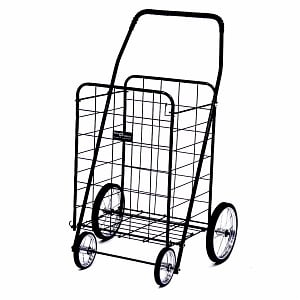This week, we have a guest post from a 2014 graduate, Amanda Beardall! After Amanda graduated, she went on to serve as an AmeriCorps*VISTA member in Philadelphia, PA. She writes about her experience living at a poverty line salary and how she learned to budget for food. We hope to have posts each week so please send your submissions to bmclifehacks@gmail.com if this is something you’re interested in!
After I graduated from Bryn Mawr, I spent my first year out of college serving as an AmeriCorps*VISTA member. My volunteer stipend was set at poverty line salary to help volunteers develop empathy and solidarity with the clients we served. When you graduate, you will no longer have access to a dining hall and will begin to realize how expensive food can be and how long it takes to prepare. Cooking can also be a great source of empowerment and creativity if you know how to make a dollar stretch. Learning to cook effectively for yourself may take some practice but it’s an invaluable life skill. Here are some strategies I used to keep costs down and still cook nutritious and tasty meals:
SNAP
- SNAP (Supplemental Nutrition Assistance Program), formerly called food stamps, is a government-funded program that provides low-income families and individuals. Make sure to check into your state’s program to see if you qualify. Do not buy into the shame and stigma that comes with applying for SNAP. Additionally, you should not feel as though you are taking away from someone else or that you aren’t as “deserving” to be on SNAP. The program is underutilized and there is no shame in using your resources, in the same way you shouldn’t feel bad using federally funded aid to get a college education. The process can be tedious, dehumanizing, bureaucratic, and long but be persistent. Receiving SNAP can cut your grocery bill in half, which makes a huge difference.
Staples
- The best way to make your food budget stretch further is by having staples such as rice, beans, spices, pasta, and lentils in your pantry. These dry goods will not expire and will be a reliable satisfactory meal. Cooking for one can be difficult because fresh food tends to go bad quickly. To keep your meals healthy, buy frozen veggies and fruits to add to stir-frys and smoothies.
- I always gave myself the leeway to buy at least one “fun” or “splurge” item, such as ice cream or Brie cheese. There’s no point in buying food you won’t eat. You will also want some variety in your diet.
Grocery Shopping without a Car
- One of the biggest challenges of grocery shopping I experienced was not having a car. While you may save money over time buying in bulk, this only works if you have the means to transport what you purchase. One of the worst feelings is doing your grocery shopping only to realize there is no possible way you can carry everything and having to resort to taking a cab. When looking for housing, make sure to see how far from a grocery store you are because otherwise you may be tempted to buy the same items for a much higher price from a convenience store.
- A solution I’ve never used but know others have is using the app InstaCart to have someone deliver your groceries to your house. You will save time but delivery costs add up quickly and you will be unable to look out for deals.
- My suggestion is to buy a personal grocery cart (see image on the right)
to carry your heavy groceries. It’s not the most fashionable item but it can be a lifesaver. If you need to travel several miles to get to a grocery store, you can take these on public transportation. - If you are planning on grocery shopping straight after work and do not have time to go home to grab your cart, make sure to pack some reusable bags because carrying multiple heavy plastic bags will hurt your hands when carrying your groceries home.

